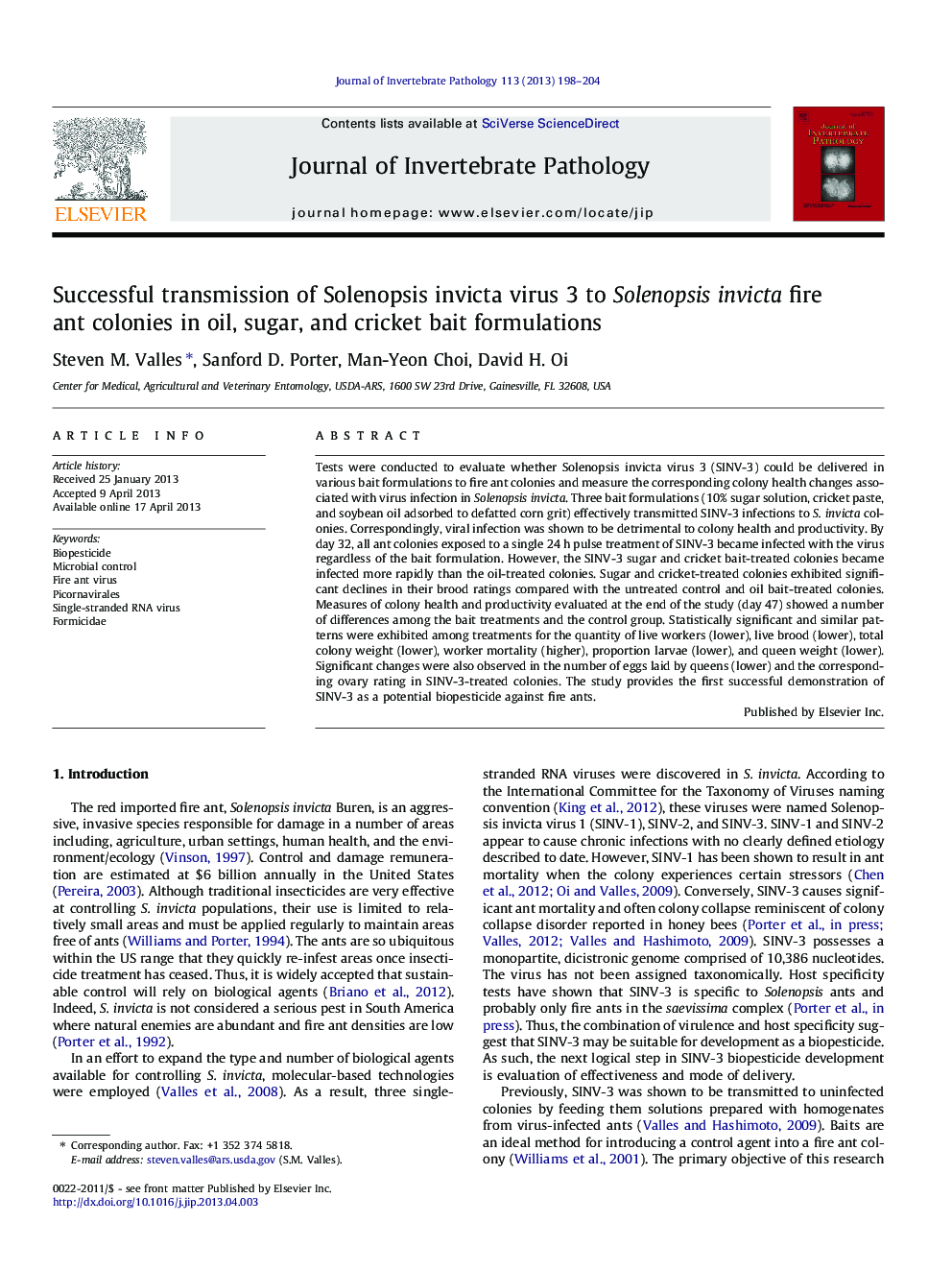| کد مقاله | کد نشریه | سال انتشار | مقاله انگلیسی | نسخه تمام متن |
|---|---|---|---|---|
| 4557812 | 1329899 | 2013 | 7 صفحه PDF | دانلود رایگان |

• Different bait formulations containing Solenopsis invicta virus 3 were prepared.
• Sugar, cricket and oil baits effectively transmitted SINV-3 to fire ant colonies.
• SINV-3 infection decreased colony health and productivity.
• Queen egg production was decreased by SINV-3 infection.
Tests were conducted to evaluate whether Solenopsis invicta virus 3 (SINV-3) could be delivered in various bait formulations to fire ant colonies and measure the corresponding colony health changes associated with virus infection in Solenopsis invicta. Three bait formulations (10% sugar solution, cricket paste, and soybean oil adsorbed to defatted corn grit) effectively transmitted SINV-3 infections to S. invicta colonies. Correspondingly, viral infection was shown to be detrimental to colony health and productivity. By day 32, all ant colonies exposed to a single 24 h pulse treatment of SINV-3 became infected with the virus regardless of the bait formulation. However, the SINV-3 sugar and cricket bait-treated colonies became infected more rapidly than the oil-treated colonies. Sugar and cricket-treated colonies exhibited significant declines in their brood ratings compared with the untreated control and oil bait-treated colonies. Measures of colony health and productivity evaluated at the end of the study (day 47) showed a number of differences among the bait treatments and the control group. Statistically significant and similar patterns were exhibited among treatments for the quantity of live workers (lower), live brood (lower), total colony weight (lower), worker mortality (higher), proportion larvae (lower), and queen weight (lower). Significant changes were also observed in the number of eggs laid by queens (lower) and the corresponding ovary rating in SINV-3-treated colonies. The study provides the first successful demonstration of SINV-3 as a potential biopesticide against fire ants.
Figure optionsDownload as PowerPoint slide
Journal: Journal of Invertebrate Pathology - Volume 113, Issue 3, July 2013, Pages 198–204